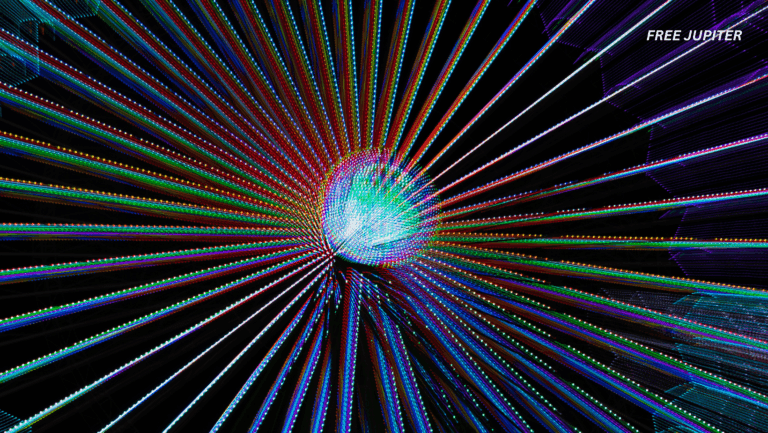Friendly Note: FreeJupiter.com shares general info for curious minds 🌟 Please fact-check all claims—and always check health matters with a professional 💙
We all think we know what time is. It ticks, it tocks, and it seems to move in one direction—from yesterday to today to tomorrow. It’s what we measure with watches and countdowns, and what we complain about not having enough of. But what if our entire understanding of time is far too simple? What if time doesn’t just move forward in a straight line… but actually sprawls in three separate directions?
This isn’t science fiction. It’s a provocative idea gaining traction thanks to new work by Dr. Gunther Kletetschka, a geophysicist at the University of Alaska. His bold claim: time might have three dimensions, just like space. And this idea, strange as it sounds, might just help solve the deepest mystery in all of modern physics—how to unify everything.
The Problem Physics Has Been Trying to Fix
To really appreciate why this theory matters, we need to understand the challenge it’s trying to address.
Modern physics has two brilliant but stubbornly incompatible sides:
- Quantum mechanics explains the tiny stuff—atoms, subatomic particles, and all the randomness of the quantum world.
- General relativity, introduced by Einstein, explains the big stuff—planets, stars, galaxies, and gravity.
Each theory is wildly successful in its own domain. But when you try to use both at the same time—say, near a black hole, where tiny particles meet extreme gravity—they clash. They simply don’t fit together. Like trying to jam puzzle pieces from two different sets, something is missing.
Physicists have spent decades searching for a “Theory of Everything”—a model that smoothly connects the large and the small, gravity and quantum mechanics, space and time. So far, no one’s cracked it.
Kletetschka believes we’ve been focusing on the wrong foundation. Instead of space, maybe it’s time—or rather, three kinds of time—that should form the bedrock of reality.
Read more: A ‘Zombie’ NASA Satellite Woke Up After 60 Years—And It Sent Out A Powerful Radio Pulse
Wait—Three Kinds of Time?
Yes, that’s the core of this new theory. According to Kletetschka, what we think of as time—this invisible thing that keeps events in order—is just one part of a much richer picture.
Just as we experience space in three dimensions (length, width, and height), this theory suggests time also comes in three forms—each flowing in its own direction, and each essential to how the universe actually works.
Imagine a cube: each edge represents one “direction” of time. Right now, we only experience one of them. The others might be hidden, or folded in ways we don’t perceive directly. But they could be influencing everything around us—from how particles behave to why the universe keeps expanding.
Kletetschka’s idea isn’t just philosophical or poetic—it’s grounded in serious mathematics that he says matches real data from particle physics and cosmology. Unlike older theories of “extra time dimensions” that were mostly math games, his framework claims to be testable.
So… How Would 3D Time Work?
Let’s try to paint a picture of what this means, without diving into the math soup.
Time, as we know it, behaves in some very strange ways depending on where you look:
- In quantum physics, time is kind of a free-for-all. Particles can exist in multiple states at once, seem to jump around randomly, and sometimes even appear to move backward.
- In relativity, time isn’t fixed. It bends and stretches depending on how fast you’re moving or how much gravity you’re feeling. Near a black hole, for example, time can practically stop.
- And in daily life, time feels steady and predictable. We wake up, brush our teeth, go to work, and wonder where the hours went.
Kletetschka suggests that maybe each of these versions of time—chaotic quantum time, stretchy cosmic time, and ordinary “clock time”—belongs to its own dimension. They’re not different versions of one thing. They’re different things entirely, all working together behind the scenes.
Read more: NASA’s James Webb Telescope Directly Photographs Saturn-Like Exoplanet For The First Time
By placing these three “times” at right angles to each other—just like the X, Y, and Z axes in space—he believes it’s possible to weave a deeper pattern of reality. This pattern, when modeled mathematically, appears to match many known features of the universe.
“These three time dimensions are the primary fabric of everything, like the canvas of a painting,” Kletetschka says.
“Space still exists with its three dimensions, but it’s more like the paint on the canvas than the canvas itself.”
Why This Theory Is More Than Just a Wild Idea
Most revolutionary theories in physics start off sounding a bit… well, crazy. But what sets this one apart is that it makes real predictions. Kletetschka’s model isn’t just a thought experiment—it’s a working framework that does things no other theory has managed to do.
His version of 3D time:
- Accurately predicts the masses of several known particles, like the electron, muon, and top quark.
- Offers possible values for the still-unknown masses of ghost-like particles called neutrinos.
- Suggests subtle tweaks to the speed of gravitational waves, which we can potentially test in the future.
That last part is particularly exciting. If gravitational waves (ripples in the fabric of space-time caused by massive cosmic events) behave just slightly differently than expected, and if those differences match what 3D time predicts, this idea might not be so fringe after all.
A Step Toward the Holy Grail: Unified Physics
Physicists have dreamed of a single, elegant explanation for the universe for decades. It’s often called the “Theory of Everything” or the “Grand Unified Theory.”
Kletetschka’s 3D time model doesn’t claim to be the answer, but it could be a crucial piece of the puzzle. By reshaping our understanding of what time actually is, this theory opens a whole new way of looking at reality—one where time is the real scaffolding, and space is just something built on top.
“The path to unification might require fundamentally reconsidering the nature of physical reality itself,” Kletetschka says.
And maybe that’s not such a bad idea. After all, every time we’ve radically rethought the universe—whether with Copernicus, Newton, Einstein, or quantum mechanics—we’ve uncovered deeper truths about where we are and how we got here.
Read more: Stephen Hawking’s Final Research Paper May Have Predicted The End Of The Universe
So, What Does This Mean for Us?
For most of us, time will probably keep feeling like it always has: a straight line we ride from morning to night. But behind the scenes, the universe may be dancing to a far more complex rhythm—one with three distinct time drums beating in harmony.
If future experiments prove Kletetschka’s theory right, it could change not only how we understand physics but also how we view existence itself. Time, it turns out, might not just be something we count—it might be what everything is.
In the meantime, it’s a mind-expanding idea worth pondering the next time you’re watching the clock and wondering where all the time went.










